Tuesday, November 5, 2013
Sunday, November 3, 2013
Keep It or Junk It
Have you ever hear of Keep It or Junk It? I learned about this strategy last week when our instructional coach introduced us to this video:
Organize Your Thinking to Critically Analyze Text
She had a picture posted of the steps for Keep It or Junk It. I can't wait to try this with my students so if you follow my blog you know I had to make some posters. I thought I'd share them in case any of my teacher followers want to give this a try too. I'll post back later and let you know how it went.
Friday, November 1, 2013
Week 11- Halloween Candy and Mad Scientist Day
Are familiar with http://www.yummymath.com/? This week I used a math word problem from their site to get my students thinking about purchasing candy for Halloween. We used the data given to figure out which bag of candy was the best deal.
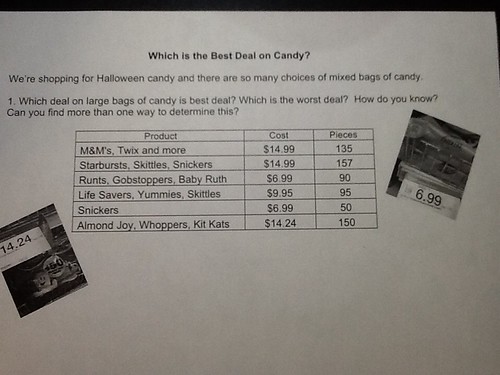
I had them work in groups to determine which was the best deal and which was the worst.
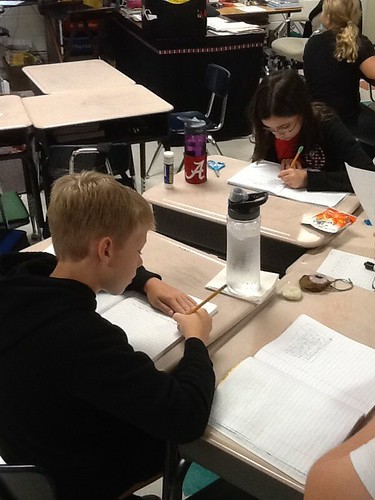
Some were surprised with the results. We also decided that if you like Snickers you're willing to pay a little more to get them.

Friday we had Mad Scientist Day! This is always so much fun. Every year we schedule this day around Halloween. The kids are able to dress as scientists and we do science experiments.

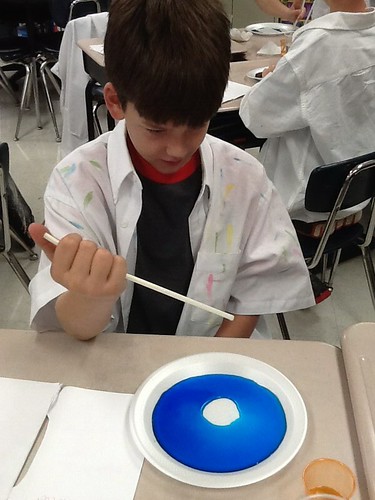
We did experiments like Shy Blue and Drop by Drop to explore water surface tension. In shy blue we add color to the water and then drop rubbing alcohol into the water. The water looks like it is running away from the alcohol.

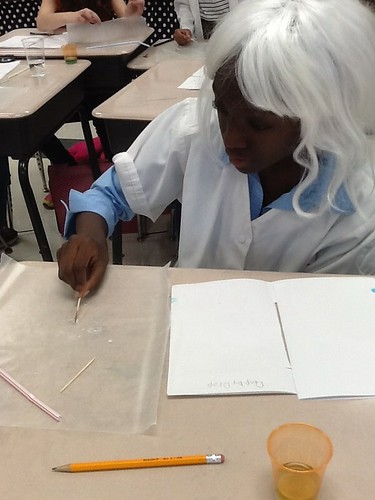
Drop by drop- we drop water on waxed paper and use toothpicks to move it around.

We also made some snow with Instant Snow from Steve Spangler.

The lava lamps were a big hit! Want to make one yourself? Fill a bottle 3/4 of the way with cooking oil. Then pour in water to top off the bottle. Add 10 drops of your favorite color food coloring. Do not shake the bottle! Then use an Alka Seltzer tablet. Break it up and drop in a small piece. It creates a lava lamp. You can continue adding pieces of the tablet until it is gone. Be careful if you put a lot in at one time. Make sure to open the lid to release pressure that builds up in the bottle.
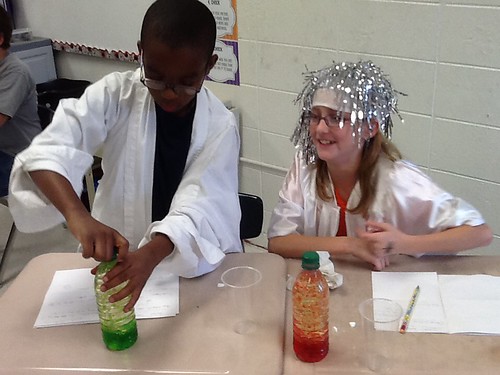
We ended the day by walking on eggs. I even gave this a try! Did you know you can walk on eggs? As you can see they had a great time doing this.
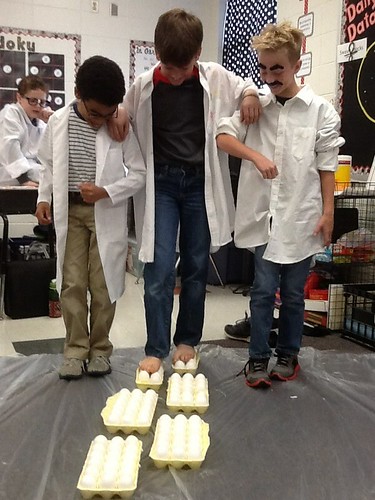

STUDENTS: What was your favorite experiment during mad scientist day? Explain what you did and why you liked it so much.

I had them work in groups to determine which was the best deal and which was the worst.

Some were surprised with the results. We also decided that if you like Snickers you're willing to pay a little more to get them.

Friday we had Mad Scientist Day! This is always so much fun. Every year we schedule this day around Halloween. The kids are able to dress as scientists and we do science experiments.


We did experiments like Shy Blue and Drop by Drop to explore water surface tension. In shy blue we add color to the water and then drop rubbing alcohol into the water. The water looks like it is running away from the alcohol.


Drop by drop- we drop water on waxed paper and use toothpicks to move it around.

We also made some snow with Instant Snow from Steve Spangler.

The lava lamps were a big hit! Want to make one yourself? Fill a bottle 3/4 of the way with cooking oil. Then pour in water to top off the bottle. Add 10 drops of your favorite color food coloring. Do not shake the bottle! Then use an Alka Seltzer tablet. Break it up and drop in a small piece. It creates a lava lamp. You can continue adding pieces of the tablet until it is gone. Be careful if you put a lot in at one time. Make sure to open the lid to release pressure that builds up in the bottle.

We ended the day by walking on eggs. I even gave this a try! Did you know you can walk on eggs? As you can see they had a great time doing this.


STUDENTS: What was your favorite experiment during mad scientist day? Explain what you did and why you liked it so much.
Saturday, October 26, 2013
Week 10- Math Journals- Keep Calm and Show Your Work!
Check out my new math t-shirt! I ordered it from TeacherShirts.com

I thought I'd also show you a few examples of the Close Reading we have been doing in math. This year we have been getting Dynamath from Scholastic. So I decided to cut them apart and use them in the math journals. So we glue the passage on the top half of the page. Then at the bottom we draw the 4 boxes for the Close method we have been learning. Here is what we write in each box:
1. Numbers
2. Question
3. Key words
4. Solve and write a complete sentence to answer the question in box 2.

Then on the opposite page I pose a question from the math fans I have. (see below)
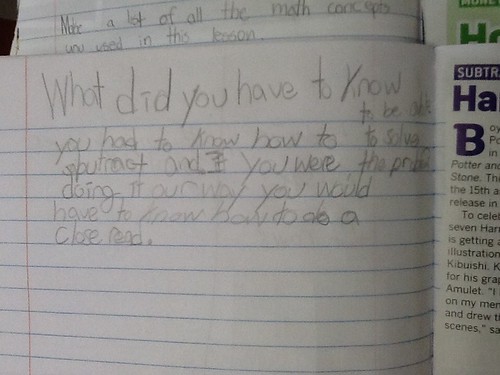


Here are the math reflection fans I purchased on TpT.

I didn't want to print them in color so I just printed each category on different colored card stock. Then I put each color on a different ring and put them all together on a large ring. I choose a question and have my students write it in their math journal and respond. Then I choose select students to share and "tweet" about it on our Twitter door.

Want to see the boxes I use for my students to create the 4 boxes on their paper in the math journal? Check out this post.
This week in science we have been learning about the layers of the atmosphere and earth. Look at our flip books!

Layers of the Earth
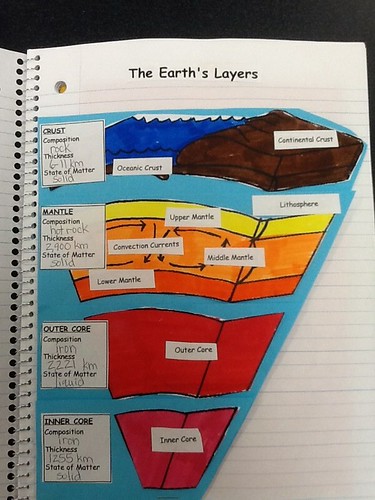
Finally, I wanted to share the TWIRL posters I made. Our instructional coach shared this with us so of course I made some posters. :) If you want, feel free to use them too.
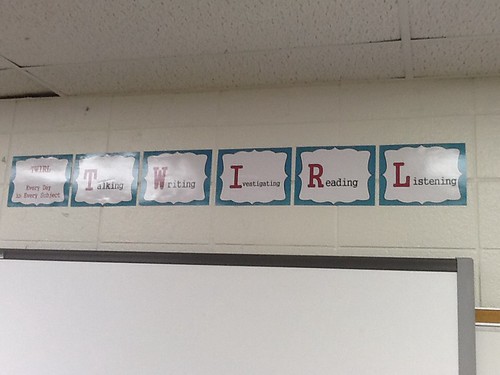
Students: Do you think the close read strategy and questions help you solve word problems easier? Why or why not? Why is it important to write complete sentences in math?

I thought I'd also show you a few examples of the Close Reading we have been doing in math. This year we have been getting Dynamath from Scholastic. So I decided to cut them apart and use them in the math journals. So we glue the passage on the top half of the page. Then at the bottom we draw the 4 boxes for the Close method we have been learning. Here is what we write in each box:
1. Numbers
2. Question
3. Key words
4. Solve and write a complete sentence to answer the question in box 2.

Then on the opposite page I pose a question from the math fans I have. (see below)



Here are the math reflection fans I purchased on TpT.

I didn't want to print them in color so I just printed each category on different colored card stock. Then I put each color on a different ring and put them all together on a large ring. I choose a question and have my students write it in their math journal and respond. Then I choose select students to share and "tweet" about it on our Twitter door.

Want to see the boxes I use for my students to create the 4 boxes on their paper in the math journal? Check out this post.
This week in science we have been learning about the layers of the atmosphere and earth. Look at our flip books!

Layers of the Earth

Finally, I wanted to share the TWIRL posters I made. Our instructional coach shared this with us so of course I made some posters. :) If you want, feel free to use them too.

Students: Do you think the close read strategy and questions help you solve word problems easier? Why or why not? Why is it important to write complete sentences in math?
Friday, October 18, 2013
Week 9- Class Mission Statement
This week my class wrote our mission statement. To start, I asked them to give me reasons why they come to school. I used popplet to organize their ideas as we went. Then I had them group the reasons into similar ideas and I color code them. Finally we wrote the mission statement. Check out our popplet. I think they did a great job writing the mission statement.
The mission of Mrs. White’s homeroom class is to develop long lasting friendships, improve leadership skills throughout our lives, and prepare ourselves for a successful life by continuing to learn.

Our math coach came this week and the kids were able to solve some word problems. Want to check out the word problem posters? I have several similar ones on my TpT page and you can find these posters on Kim's TpT page.

STUDENTS: Have you thought about writing your own mission statement? What are your goals in life? Share your ideas here.
Friday, October 11, 2013
Week 8- Close Reading in Math, Number Crunchers, and Newton's Laws
This week was full of lots of new things in our classroom. We started with Close Reading. Our instructional coach said she wanted us to do a close reading with our students before our next meeting and have something to bring back to share. Since I teach math and science I decided to adapt the close reading to word problems. I set up this chart so my students could use it to record the information in their math journal. This is just like our CUBE strategy for problem solving so it was easy for them to collect the information from the word problems and add it to their journals.


The 4th box must contain the work that show the answer to the problem and a complete sentence that answers the question in box 2.

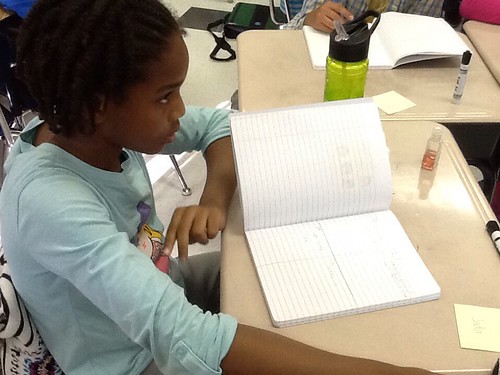
I think has really helped my students with word problems. Some of them see a bunch of words and decide they can't do it. But this has allowed them to persevere and find the answer! Want to hear one of my students explain it in her own words? Listen to Gianna's showme below.
We also spent some time talking about the types of mistakes we make when doing math.

By the end of the week my students were able to identify the types of mistakes they were making and correct them.
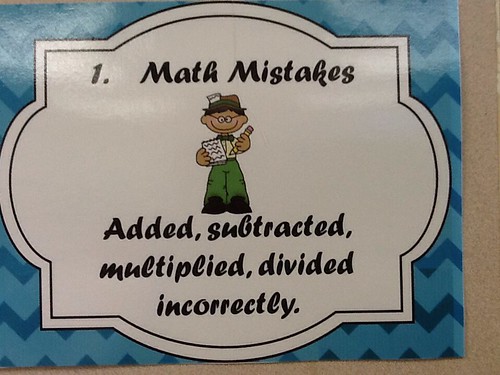

(See previous post for the posters- free)

We also played Number Crunchers. (Free posters from the previous post)

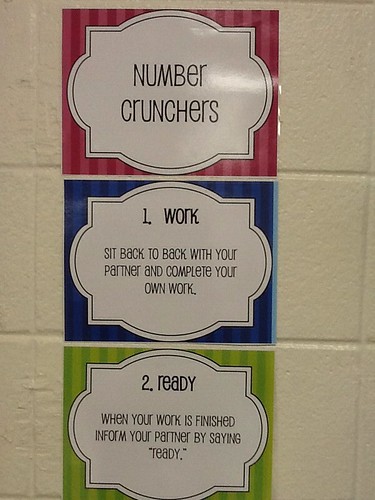
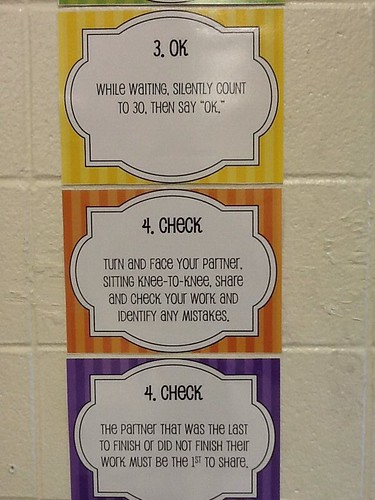
Instead of working with a partner we worked in small groups. Each student had their own set of Versatiles and a Smartpal with the problems inside. They followed the Number Crunchers rules to solve the problems. It was great listening in to groups and hearing them share and talk about the types of mistakes that were made.

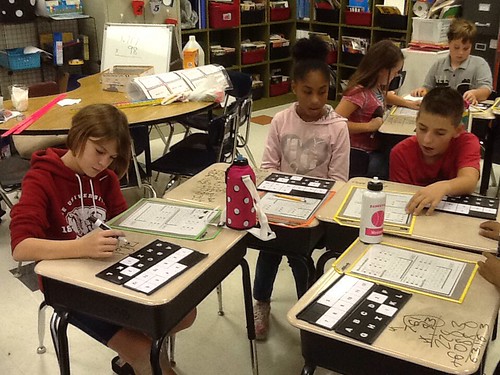
We have been studying Newton's Laws this week in science. If you study this you MUST check out these activities! My students loved them!
Newton's Laws of Motion Stations
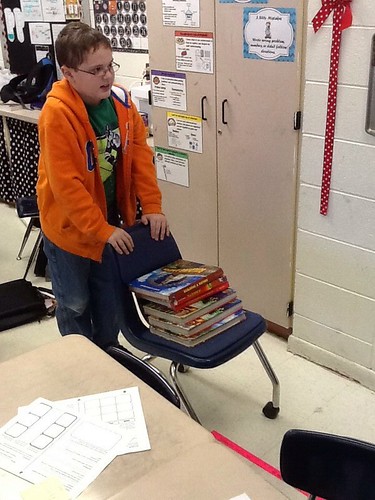



This one had to be my favorite. Parents sent in raw and boiled eggs. I put a ? on one and an ! on the other. The students then had to spin the egg and use Newton's 1st law of motion to figure out which one was boiled and which was raw. I loved hearing their thoughts in this station.


STUDENTS: Which was your favorite Newton's Law Station? Why did you like it the best? What did you do in that station?


The 4th box must contain the work that show the answer to the problem and a complete sentence that answers the question in box 2.


I think has really helped my students with word problems. Some of them see a bunch of words and decide they can't do it. But this has allowed them to persevere and find the answer! Want to hear one of my students explain it in her own words? Listen to Gianna's showme below.
We also spent some time talking about the types of mistakes we make when doing math.

By the end of the week my students were able to identify the types of mistakes they were making and correct them.


(See previous post for the posters- free)

We also played Number Crunchers. (Free posters from the previous post)



Instead of working with a partner we worked in small groups. Each student had their own set of Versatiles and a Smartpal with the problems inside. They followed the Number Crunchers rules to solve the problems. It was great listening in to groups and hearing them share and talk about the types of mistakes that were made.


We have been studying Newton's Laws this week in science. If you study this you MUST check out these activities! My students loved them!
Newton's Laws of Motion Stations




This one had to be my favorite. Parents sent in raw and boiled eggs. I put a ? on one and an ! on the other. The students then had to spin the egg and use Newton's 1st law of motion to figure out which one was boiled and which was raw. I loved hearing their thoughts in this station.


STUDENTS: Which was your favorite Newton's Law Station? Why did you like it the best? What did you do in that station?
Sunday, October 6, 2013
Meaningful Mistakes in Math & Number Crunchers- Free Download
I was spending some time on Pinterest and found this anchor chart that I just loved! Take a look and see if you love it as much as I do! My pin: http://www.pinterest.com/pin/218987600605069403/
Original post with lots of other anchor charts @ Working4theClassroom.
So I decided to make some posters using the anchor chart. Here is the first set, Meaningful Mistakes! I love the idea that students need to know what kind of mistake they made when completing their math assignments. I will be using this with my students next week.
Original post with lots of other anchor charts @ Working4theClassroom.
So I decided to make some posters using the anchor chart. Here is the first set, Meaningful Mistakes! I love the idea that students need to know what kind of mistake they made when completing their math assignments. I will be using this with my students next week.
Subscribe to:
Posts (Atom)
